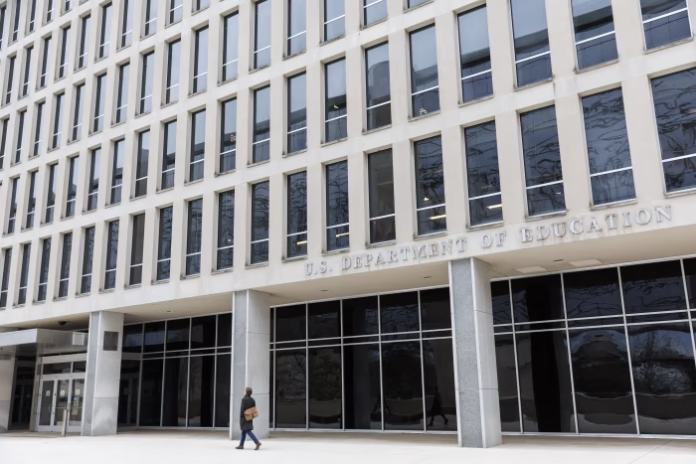The student loan landscape is shifting fast, and borrowers are feeling the heat. On April 21, 2025, the U.S. Department of Education announced it will resume “involuntary collections” for defaulted federal student loans starting May 5, 2025. This marks the end of a five-year pause that began in March 2020 during the COVID-19 pandemic. Over 5 million borrowers are currently in default, with another 4 million in late-stage delinquency, meaning they’re more than 90 days behind on payments. For these borrowers, the stakes are high—wage garnishment, tax refund seizures, and even Social Security offsets could hit hard if they don’t act soon. This blog dives into the latest developments, what they mean for borrowers, and how to navigate the choppy waters of student debt in 2025.
Why the Student Loan Pause Ended
The decision to restart collections stems from growing concerns about the federal student loan portfolio, now ballooning to $1.6 trillion. Education Secretary Linda McMahon emphasized that taxpayers shouldn’t bear the burden of unpaid loans. The pause, initially a relief measure under the Trump administration and extended by Biden, gave borrowers a breather but also led to a surge in delinquencies. Now, with only 40% of borrowers current on payments, the Department of Education is cracking down. Critics, like Mike Pierce from the Student Borrower Protection Center, call the move “cruel,” arguing it could plunge millions into financial chaos. Borrowers will get a 30-day notice before collections begin, with emails from the Office of Federal Student Aid urging them to explore repayment options.
What Involuntary Collections Mean for Borrowers
Starting May 5, the Treasury Department’s Offset Program will kick in, targeting defaulted borrowers by withholding tax refunds, federal salaries, and benefits. If payments remain unpaid by summer, wage garnishment could follow, docking up to 15% of a borrower’s income. For the 5.3 million in default, this is a wake-up call. The Department is offering a lifeline—borrowers can contact the Default Resolution Group to set up affordable monthly payments, enroll in income-driven repayment (IDR) plans, or pursue loan rehabilitation. Rehabilitation requires nine consecutive on-time payments, after which the default status is lifted. But with only one shot at rehabilitation, borrowers need to act strategically.
Here’s what borrowers can do to avoid collections:
- Contact the Default Resolution Group: Set up a payment plan tailored to your income.
- Explore IDR Plans: Options like Income-Based Repayment or Pay As You Earn cap payments based on earnings.
- Pursue Loan Rehabilitation: Make nine on-time payments to clear default status.
- Consolidate Loans: Combine multiple loans into one with a potentially lower payment.
Student Loan System in Flux: Broader Challenges
Beyond collections, the student loan system is grappling with chaos. The Trump administration’s push to overhaul the Department of Education has led to massive staff cuts—nearly 50% of the workforce was slashed in early 2025. This has caused outages in loan and grant systems, unanswered calls, and delays in processing financial aid. The recent decision to shift student loan management to the Small Business Administration (SBA) has sparked skepticism. Experts warn the SBA lacks the infrastructure to handle a $1.6 trillion portfolio, potentially increasing default risks. Meanwhile, the Saving on a Valuable Education (SAVE) plan, which offered generous forgiveness, is on hold after a federal court injunction, leaving 8 million borrowers in limbo.
Borrower Stories: The Human Toll
For many, the resumption of collections feels like a gut punch. Take Sarah, a 34-year-old teacher from Ohio, who defaulted during the pandemic after losing her second job. “I thought the pause would give me time to get back on my feet,” she says. “Now, I’m terrified they’ll garnish my wages.” Stories like Sarah’s are common. With 35% of borrowers 60 days delinquent and 4 million in late-stage delinquency, the financial strain is palpable. Advocates argue that restarting collections without robust support systems—like accessible IDR plans or clear communication—sets borrowers up to fail. The Department’s “robust communication strategy” promises emails and outreach, but with a gutted staff, execution is uncertain.
Navigating the Student Loan Maze in 2025
So, what can borrowers do? First, check your loan status on studentaid.gov and download payment records to ensure accuracy. If you’re in default, act fast—reach out to your loan servicer or the Default Resolution Group. IDR plans are a solid option for many, especially after recent tweaks. For married borrowers, a April 17, 2025, court filing clarified that spousal income won’t factor into IDR calculations, potentially lowering payments for some. If you’re eligible for Public Service Loan Forgiveness, submit employer certification forms now, especially with program changes looming. Finally, stay informed. The student loan system is a moving target, and policies could shift further under the Trump administration’s push to streamline or privatize.
The Bigger Picture: A System at a Crossroads
The student loan crisis isn’t just about collections—it’s about a broken system. With 43 million Americans owing $1.7 trillion, the stakes are enormous. The Biden administration canceled $183.6 billion in debt for 5 million borrowers, but courts blocked broader relief. Now, with collections resuming and the Department of Education in disarray, borrowers face unprecedented uncertainty. Some lawmakers, like Senators John Thune and Mark Warner, are pushing for employer-funded loan repayment programs, but these are stopgaps. Long-term fixes, like reforming higher education costs or expanding forgiveness, require Congressional action—something the current political climate makes unlikely.
As the May 5 deadline looms, borrowers must take charge. Whether it’s enrolling in an IDR plan, pursuing rehabilitation, or bracing for garnishment, preparation is key. The student loan system may be a mess, but knowledge is power. Stay proactive, keep records, and don’t let the system catch you off guard. For millions, the next few months will test resilience, but with the right moves, you can weather the storm.
